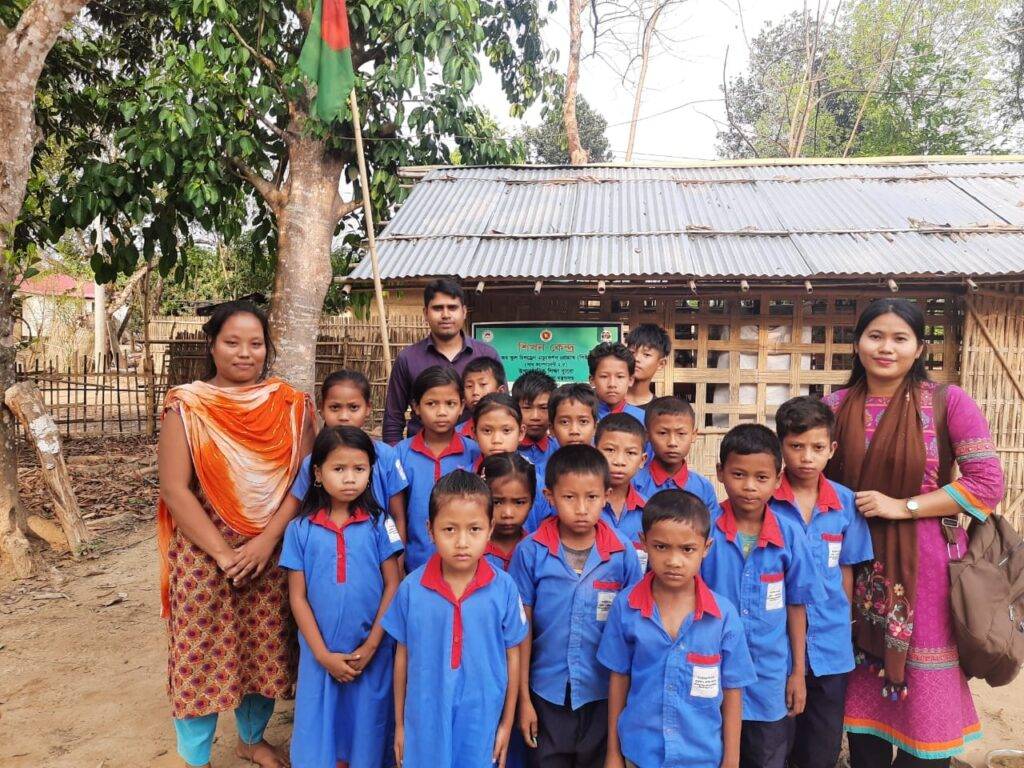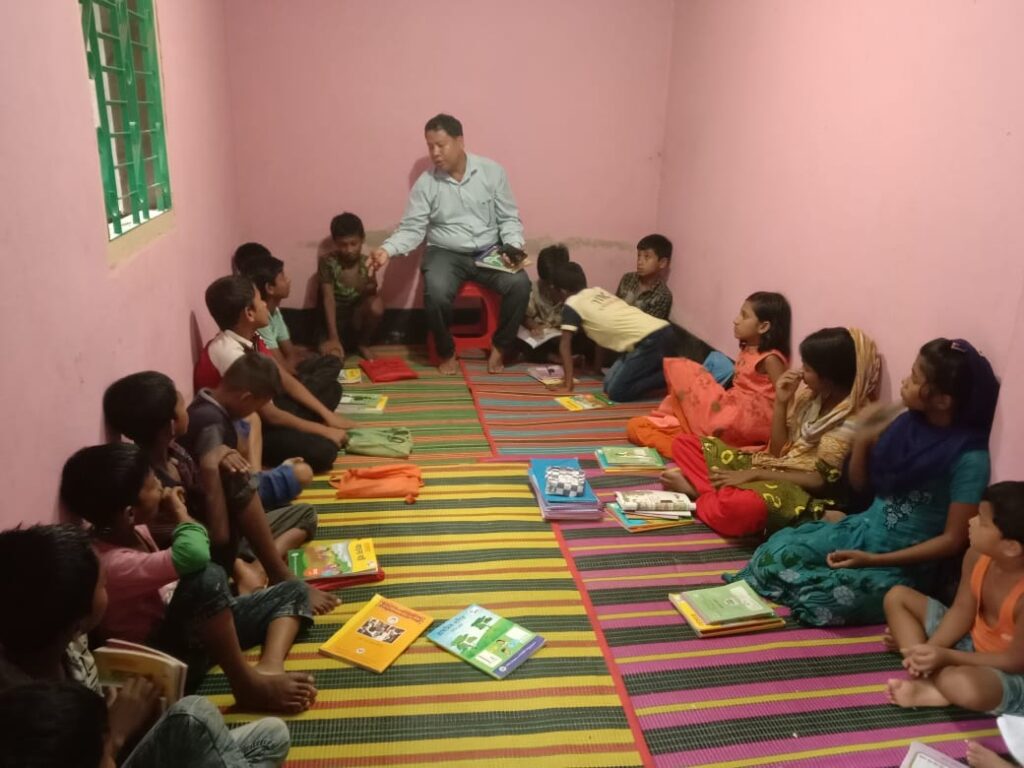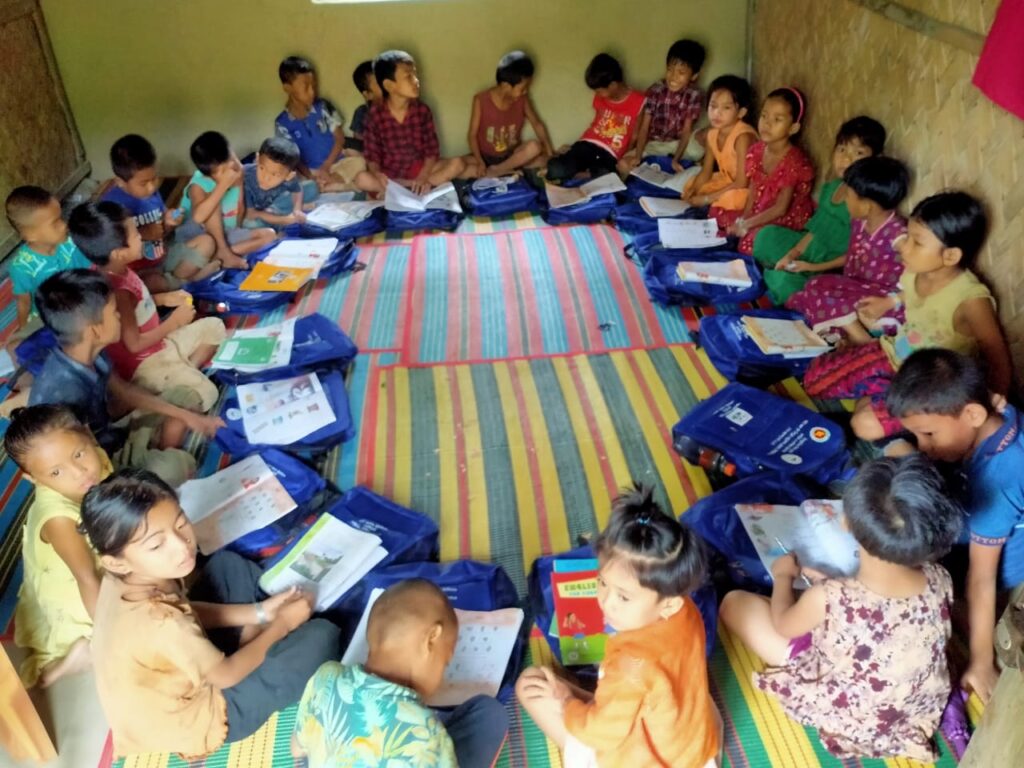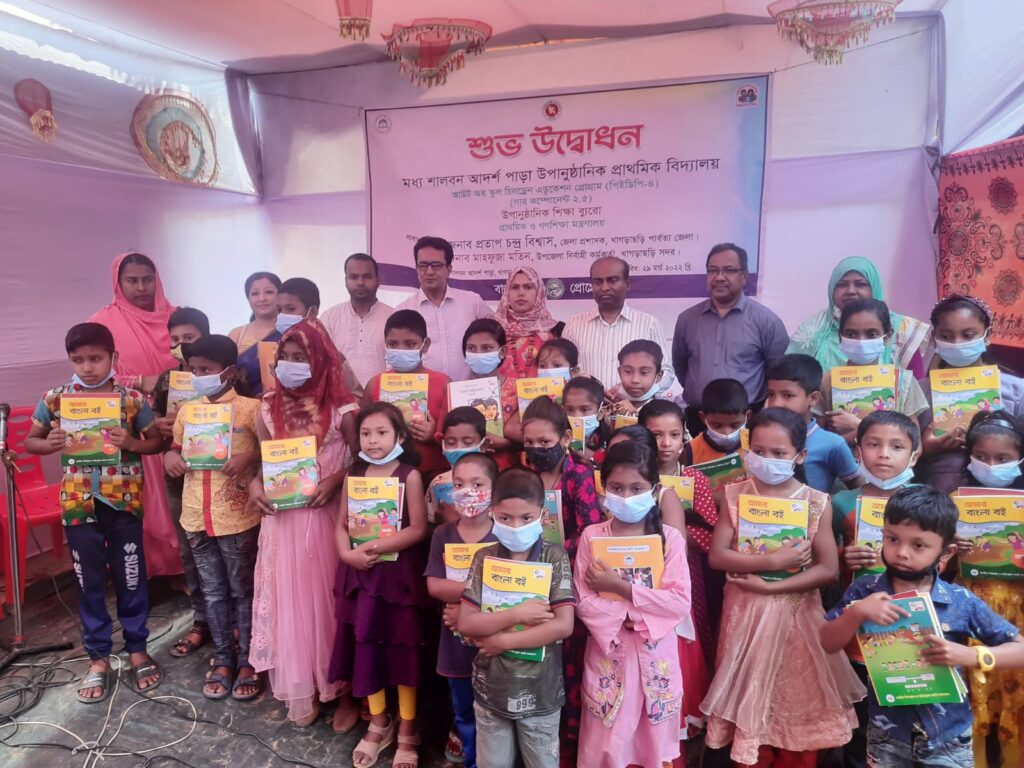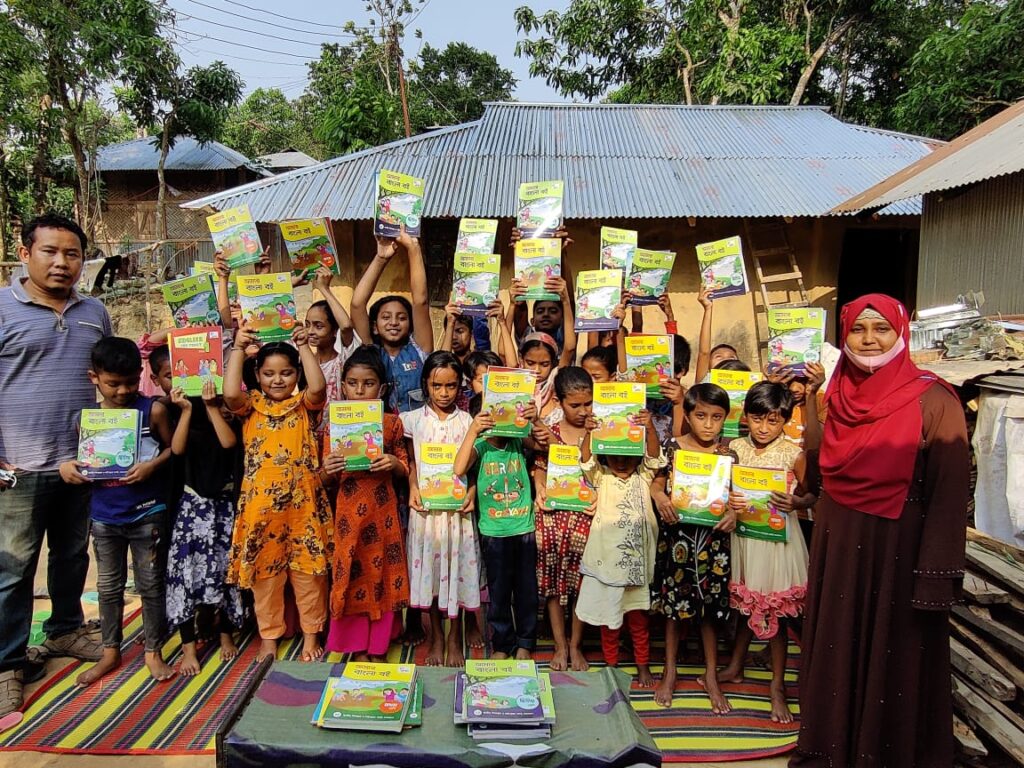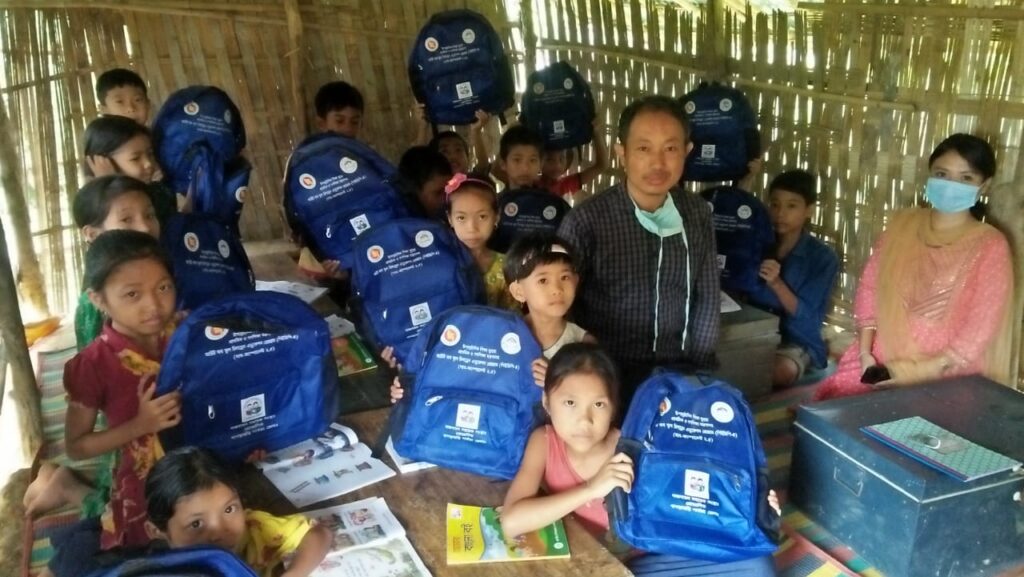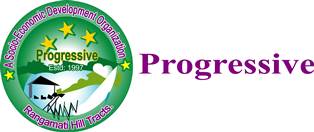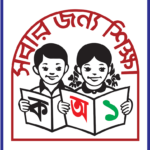
Out of School Children Education Programme Bureau of Non-formal Education Ministry of Primary and Mass Education
Progressive is implementing a project named Out of School Children Education Program under sub-component 2.5 of the Fourth Primary Education Development Program (PEDP-4) for the second time for out-of-school (dropout and non-enrolment) children of 8-14 years of age of 8-14 years of learning centers. It’s a partnership program with Bureau of Non-formal Education &Ministry of Primary and Mass Education Progressive is implementing the project as the Implementation Support Agency (ISA) in Khagrachhari Hill District.
The program aims to provide educational opportunities to drop-out children and support to mainstream formal education. Basically primary and planned education system, through which this great program aims to complete the primary education opportunity of the deprived students.
Aspiring student
A report by the Department of Primary Education (2016) found that the current primary school dropout rate is 19% and the never-enrolment rate is 2%. Children who drop out and never enroll are not included. It is estimated that there are 43 lakh children in the age group of 8-14 across the country who are deprived of education. Sub-component 2.5 of the Fourth Primary Education Development Program in lieu of PEDP-4 aims to provide primary education to 10 lakh uneducated children through a sound and planned education system.
Characteristics of the learning center
- 20-30 and 8-14 year old students;
- Single/Multiple Class Schools;
- NCTB is taught through textbooks;
- Accelerated Model Syllabus;
- One teacher;
- One classroom;
- 7-11 member specialized CMC;
- 3 hour classes and 6 days a week classes;
Modality of Learning Center
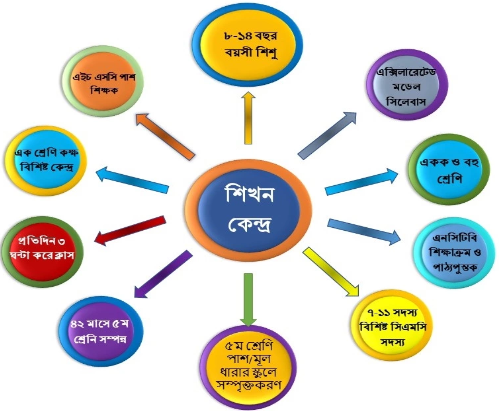
Learning modalityThe syllabus will be used in the accelerated model to ensure that out-of-school children achieve class-based learning outcomes.
General definition
Generally cohort means a group for education. A cohort model is a model that involves a specific group at a specific point in time. In this model, the education program which is completed in 5 academic years by the government is completed by a group of students in 4 years that is the cohort model.
Intended target group: Out-of-school and drop-out children aged 8-14 years.
Characteristics of Cohort Modality
A cohort model is a cohort model that involves a specific cohort at a specific point in time;
NCTB curriculum and Text books are taught in cohort model;
- In this model, the education program that is completed in the government 5 academic years is completed with a group of students in 4 years, that is the cohort model;
- Cohort model features – 28-30 students aged 8-14 years under one teacher complete 4 years of primary education;
- 8-30 boys and girls aged 8 to 14 years were selected for each education center;
- At least one SSC pass teacher is appointed for each centre;
- Classes are conducted for 3 hours from 1st to 2nd class, 3.30 hours for 3rd class and 4.00 hours for 4th and 5th class. Class start time is fixed according to the convenience of the student-parents;
- Most schools start in the morning without special reason in most cases;
- Cohort Model: Class 1-9 months, Class 2- 9 months, Class 3- 9 months, Class 4- 10 months, and Class 5- 11 months, a total of 48 months
Advantages of cohort modality
- 1st, 2nd and 3rd grade will achieve 6 months in total in 18 months equivalent to 3 years of learning;
- In a total of 48 months will achieve all the prescribed qualifications of 1st-5th grade and participate in the primary education final examination
Multi-grade Modality
In this way, students of all levels can easily enroll in learning programs and continue their studies. Each subject is taught by dividing the children into small groups based on their skills and abilities.
Intended target group Out-of-school and drop-out children aged 8-14 years
Characteristics of Multi-grade Modality·
- NCTB Curriculum and Toxet books are taught in multigrade method.;·
- In this way, students of all levels can easily enroll in learning programs and continue their studies;·
- Each subject is taught by dividing children into small groups based on their skills and abilities;·
- Learning center timings are fixed according to the convenience of children in the area/village;·
- A fair and enjoyable learning environment will be fostered through extensive participation of parents and the community;·
- One teacher is assigned to each center;·Teaching time in two shifts daily 9 am to 12 noon and 2 pm to 5 pm;·
- Standardized holistic assessment process helps to understand the individual merit and progress of the student and take necessary measures;·
- In this method, according to subject-based knowledge and ability, students are divided into four groups in the classroom;·
- These groups are – 1. Early, 2. Pioneer, 3. Skilled and 4. Independent. The student’s individual aptitude and ability are taken into account;·
- An advanced student can be promoted to the next grade in the fastest time;·
- It takes less time to complete the entire cycle of primary education;
Aim of the Project:
The Out of School Children Program, under Sub-Component 2.5 of PEDP-4, aims to provide primary education to out-of-school children aged 8-14 in Shikhan Kendra. This initiative targets dropouts and non-enrolled children, offering them a second chance at primary education and facilitating their reintegration into the formal education system. The primary goal is to ensure that deprived students have the opportunity to complete their primary education through a structured and planned educational approach.
Project Outputs:
- Distribution of free educational materials including bags, notebooks, pens, and clothes.
- Provision of education scholarships to support children’s learning.
- Recruitment of teachers for the introduction of Learning Centers.
- Organization of guardian meetings to enhance parental involvement and support.
- Establishment and operation of committees responsible for the formation and relocation of Learning Centers.
Project Outcomes:
- Increased enrollment of formerly out-of-school children in formal education institutions.
- Enhanced awareness among parents regarding the importance of education and their role in supporting their children’s learning journeys.
This project endeavors to address the critical issue of out-of-school children by providing them with the necessary resources, support, and opportunities to access quality primary education. Through collaborative efforts between the government, donors, and local communities, it seeks to empower children and families, ultimately contributing to the overall development and welfare of the region.
Working coverage:
- Upazilas: Khagrachhari Sadar, Dighinala, Matiranga, Guimara, Ramgahr, Manikchhari, Mohalchhari.
- Total learning centres: 490
- Total students: 14700
